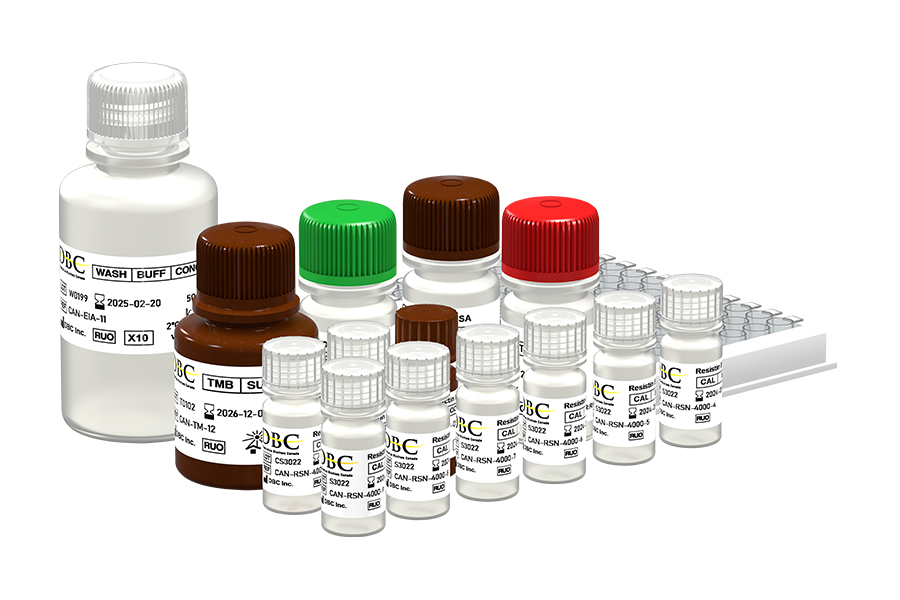
- CAN:

- EU:


- USA: For Research Use Only. Not For Use In Diagnostic Procedures.
The Resistin ELISA is a two-step capture or ‘sandwich’ type immunoassay. The assay makes use of two highly specific monoclonal antibodies: A monoclonal antibody specific for resistin is immobilized onto the microplate and another monoclonal antibody specific for a different epitope of resistin is conjugated to biotin (biotin conjugate). In the first incubation step, resistin present in the specimen samples, calibrators and controls is simultaneously bound by the immobilized antibody and biotin conjugate antibody, thus forming a sandwich complex. Excess and unbound materials are removed by a washing step. In the second incubation step, streptavidin-HRP (streptavidin HRP conjugate) is added, which binds specifically to any bound biotin conjugate. Unbound streptavidin HRP conjugate is removed by a washing step. Next, the TMB substrate (enzyme substrate) is added which reacts with HRP to form a blue coloured product that is directly proportional to the amount of resistin present. The enzymatic reaction is terminated by the addition of the stopping solution, converting the colour from blue to yellow. The absorbance is measured on a microplate reader at 450 nm. A set of calibrators is used to plot a calibrator curve from which the amount of resistin in specimen samples and controls can be directly read.
